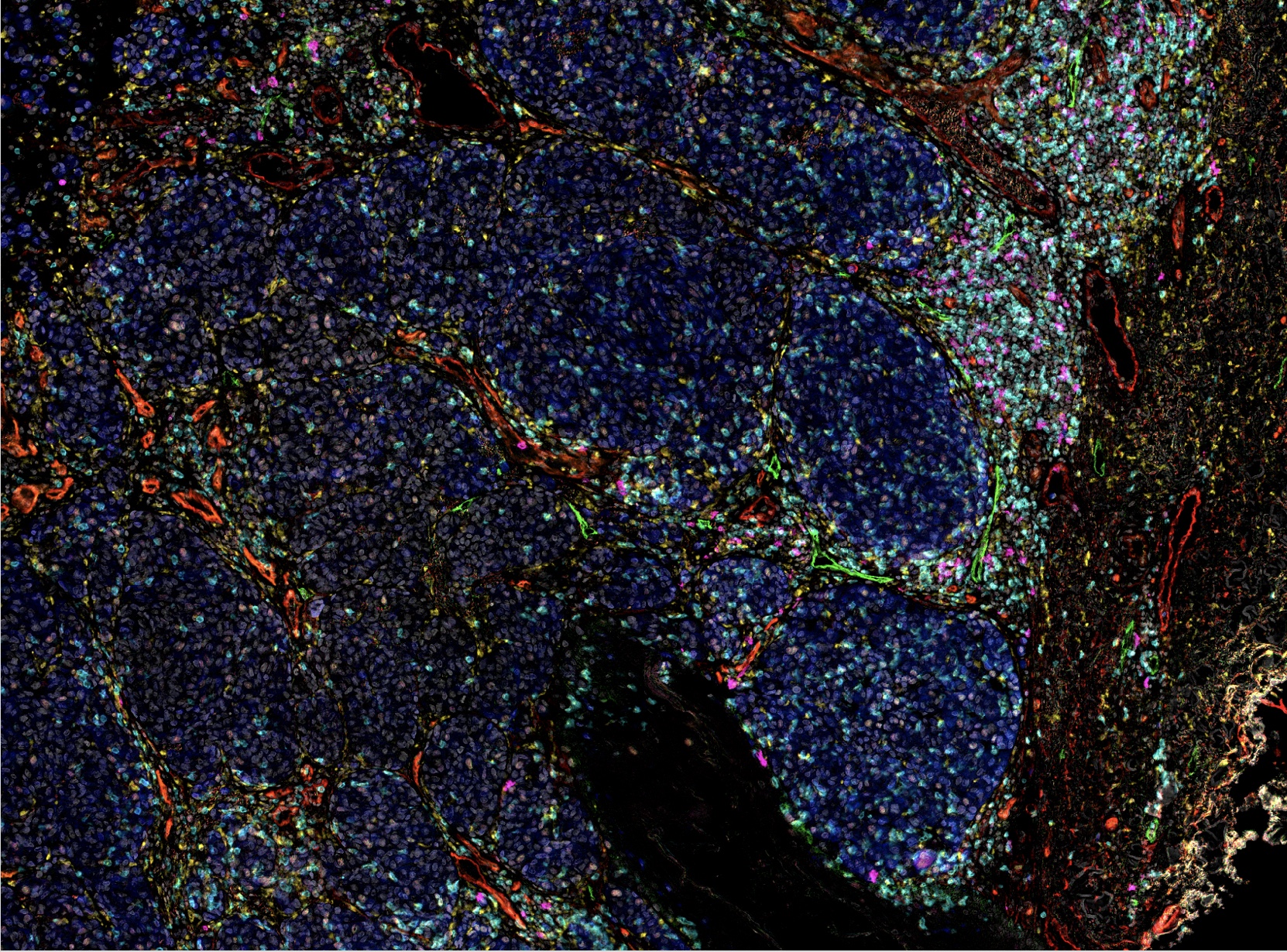Our Research
Dr. Lund Presents at Global Immunotalks: Lymphatic Transport: Regulating the Flow of the Immune Response
Murine dermal lymphatic and blood capillaries. (Haley du Bois, 2019).
Leukocyte Egress, Immune Resolution, & Evasion
The dynamics of leukocyte accumulation in peripheral tissue and tumors depends upon multiple mechanisms of recruitment, retention, survival, and exit (egress) from tissue. We are exploring the molecular mechanisms that determine stay and go signals and the functional consequence of egress via lymphatic vessels on intratumoral leukocyte complexity and response to immunotherapy.
Cultured human dermal lymphatic endothelial cells (Haley du Bois, 2019).
Lymphatic Transport in Immunity
We are challenging the paradigm that afferent lymphatic transport is passive and rather argue that lymphatic vessels actively regulate their transport properties to coordinate host response to peripheral challenge and solute/pathogen/antigen delivery to lymph nodes. We are using cutaneous infection to dissect and define ‘normal’ lymphatic function and its consequences on immunity in order to determine the extent to which lymphatic transport can be modulated to tune the anti-tumor immune response.
Multiplexed IHC of primary melanoma and adjacent vasculature (Julia Femel, 2018).
The Tumor-Draining Lymph Node
The tumor draining lymph node sits at the crossroads of metastasis and immunity and yet we have a limited understanding for how this critical immunological organ is coopted by a tumor to facilitate tumor progression. We are exploring the lymph-borne signals that coopt the tdLN, the progressive changes that occur within the tdLN and their implications for metastasis and anti-tumor immunity, and the impact of the tdLN microenvironment on melanoma heterogeneity.
Multiplexed immunohistochemistry of the vascular, and immune microenvironment of human primary cutaneous melanoma (Julia Femel, 2018).



